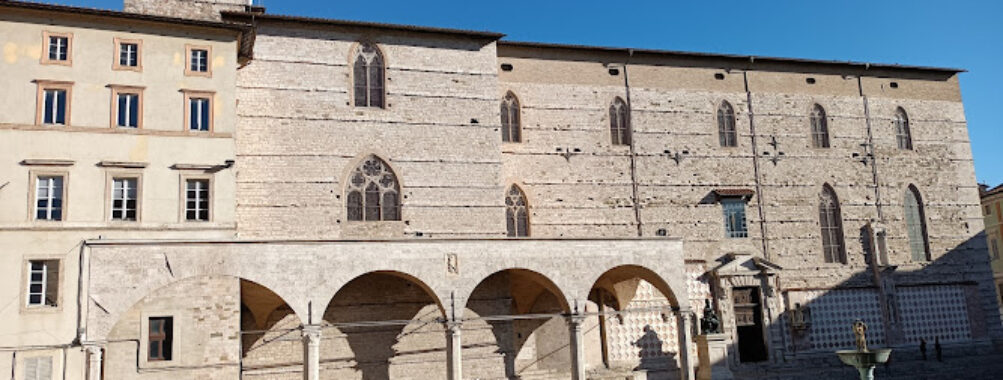
Capitularies Museum of Saint Lorenzo
Table of Contents
Description
The Capitularies Museum of Saint Lorenzo in Perugia is one of those places that quietly stays with you long after your visit. Tucked inside the cloister of the Cathedral of San Lorenzo, it’s not the kind of museum that overwhelms you with endless halls or flashy displays. Instead, it feels intimate, almost like being invited into a private corner of the city’s history. The focus here is centuries-old religious art and artifacts, many of which have been carefully preserved by the cathedral chapter for generations. Walking through, you’ll see paintings, manuscripts, and sacred objects that tell the story of Perugia’s spiritual and artistic life.
What makes the museum stand out is the atmosphere. The cloister itself, with its quiet arches and stone walls, sets the tone before you even step inside. Some visitors are struck by the sense of peace, while others are captivated by the rare chance to see works by masters like Perugino in the very city where he lived and worked. It’s not a massive collection, but it’s curated with care. And honestly, that’s part of the charm—there’s room to breathe, to linger, and to really look at what’s in front of you without feeling rushed.
Of course, not every visitor is swept off their feet. Some feel the museum is smaller than expected or wish there was more context provided in English. That’s fair. But for those who enjoy history, art, and the feeling of stepping back into a quieter world, it’s a rewarding stop. Families often appreciate that it’s manageable in size, kids don’t get bored too quickly, and the staff is welcoming. Accessibility is also thoughtfully considered, with wheelchair-friendly entrances and restrooms, which isn’t always the case in historic buildings like this.
Key Features
- Located within the serene cloister of the Cathedral of San Lorenzo in Perugia
- Collection of centuries-old religious paintings and sacred artifacts
- Highlights include works attributed to Perugino and other Umbrian masters
- Exhibits that showcase Roman streets, Etruscan walls, and medieval architecture
- Interactive guidebooks available in multiple languages
- Family-friendly environment that’s also good for children
- Wheelchair accessible entrance and restrooms
- Restroom facilities available on-site
Best Time to Visit
If you’re planning your trip, timing can make all the difference. The museum is open year-round, but the experience shifts with the seasons. Spring and autumn are especially pleasant because the weather in Perugia is mild, and the cloister feels even more inviting when you can step outside afterward and enjoy the city without the summer heat. Summer can be busier, especially during festivals, and while the museum itself rarely feels crowded, the surrounding streets might. Winter has its own charm—fewer tourists, a quieter vibe—but keep in mind that shorter daylight hours can make the city feel a bit sleepy. Personally, I loved visiting in late September; the light in the cloister was golden, and there was just enough bustle in town to keep things lively without being overwhelming.
How to Get There
Reaching the Capitularies Museum of Saint Lorenzo is easier than you might think, even if you’re not familiar with Perugia. The city itself is well connected by train and bus, and once you’re in the historic center, the cathedral and its cloister are hard to miss. The museum is right in the heart of the old town, so if you’re already exploring landmarks like Piazza IV Novembre or the Fontana Maggiore, you’re practically there. Walking is the best way to arrive, since the streets are narrow and mostly pedestrian-friendly. If you’re driving, be prepared to park outside the center and take a mini-metro or shuttle bus in—cars and medieval lanes don’t mix well. And honestly, half the fun is wandering through the winding streets until you stumble upon the cathedral itself.
Tips for Visiting
Here’s the thing: visiting a place like the Capitularies Museum of Saint Lorenzo is as much about mindset as it is about logistics. It’s not a blockbuster museum, so don’t expect hours of exhibits or high-tech displays. Go in ready to slow down and soak up the details. Take your time with the paintings—look closely at the brushwork, the faded gilding, the expressions on the faces. These works were created to inspire devotion centuries ago, and they still carry that quiet power today.
If you’re traveling with kids, the museum is a manageable size, which makes it easier to keep their attention. Bring along a story about the cathedral or the artists to make it more engaging for them. For accessibility, rest assured that the entrance and restrooms are wheelchair-friendly, which is a relief in such an old building. There’s no on-site restaurant, so plan to grab a bite before or after—luckily, the surrounding streets are packed with cafés and trattorias where you can refuel with Umbrian specialties.
And a personal tip: don’t skip the courtyard. Even if you’re not an architecture buff, standing in that cloistered space, with centuries of history echoing around you, is something special. I lingered there longer than I expected, just watching the light shift across the stone. If you can, go earlier in the day when it’s quieter. Finally, bring a camera, but also put it down sometimes. The best memories you’ll take away from this museum aren’t the photos—they’re the moments when you feel connected to a piece of history in a way that’s hard to put into words.
Location
Places to Stay Near Capitularies Museum of Saint Lorenzo
Find and Book a Tour
Explore More Travel Guides
No reviews found! Be the first to review!